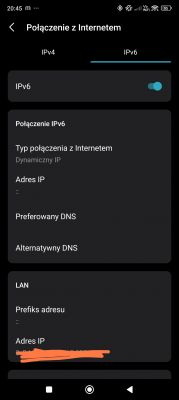Adam-T wrote: kashmiri wrote: Of ONT in TM you can ask and they will bring. In any case, at Fibre Investment.
I am just after the installation of the light from TM (Fibre optic Investments) and as the technician told me: it is not possible for me to install the ONT. And I asked him earlier. He added that it probably depends on the region of Poland.
.
You have had an account since 2004 and I won't even comment on that but if you would have refused to install without an ONT then a technician would have found you that ONT. Without signing the handover protocol you are not bound by any contract because it is not concluded.
Now, if you want an ONT from them, you have to pay for the "paid assistance" of a technician who, for more than 100 PLN added to the invoice payable at the end of the month, will install the ONT for you, or you can make a temporary arrangement with a Leox ONT or their insert (there is a topic on trzepak or youtube "how to get rid of the operator's router and have faster internet", ridiculous title but well, from some Rafał from ifixit on youtube.
If you want a permanent public IPv4 address for this ONT it is best to write a complaint in the living room, because if you write to boa(_at_)t-mobile.pl then depending on the consultant they may write back that "we don't offer it for fibre" when in fact they do, but someone above taught them to dismiss such customers because IPv4 addresses cost money, a negligible cost for t-mobile but it is still more profitable for them to do CG-NAT (can anyone confirm that it is not NAT one to one?)
kashmiri wrote: .
I'm adding a few details as the thread appears high in the search engine.
- You can ask for ONT at TM and they will bring it. In any case, on Fibre Investments.
- For public IPv4 in TM you can also ask, cite that net friends got it, and they will give it. Free of charge. Be warned, it will be static.
- You get the connection data (user and pass) in the email after signing the contract. One of the PDF attachments.
You can also start with another operator. INEA e.g. on the MID always installs ONT + a pretty good combo. Then at most switch to TM or orange.
.
If we do not give an email address because we are not naive to give for t-mobile, why? See the data leak from e.g. a2mobile or recently from alab laboratories then the consultant will print us the data for PPPoE. Quoting here from this thread:
marcinfx585 wrote: The login for PPPoE itself is the phone number that T-Mobile itself provides ie:
48998xxxxxxxx and that ridiculous 10 character password from the contract, upper and lower case.
Why such an idea from them for such weak passwords?
.
The t-mobile phone number "requirement" itself remains, why? I don't know, they explain that they need to know where the technician has to call but strangely they can't remove this number later in the database.
As far as other information that might be useful for someone is concerned, a large part of HOPs in orange optic fibre are from TPNET (host tpnet.pl) in t-mobile they are from eranet.pl
RevDNS for orange looks like this:
ipv6.supernova.orange.pl
ipv4.supernova.orange.pl
For t-mobile it is:
ftth.dynamic.t-mobile.pl or static.t-mobile.pl if you ask for a public IP address
With geolocalisation of such IPv6 or IPv4 addresses, in orange it looks quite correct with no prefix /ipv6 (then we get a variable public IPv4 address, with the /ipv6 prefix we are behind CG-NAT) in t-mobile we have CG-NAT by default. Probably the number of people who added the correct (or relatively correct as far as cities are concerned, because provinces should match) city names to databases, e.g. maxmind I think that orange PoP point of presence which are in every major city, probably provinces, are irrelevant, but officially orange does not play with such geolocalisation according to what they said at the presentation.



